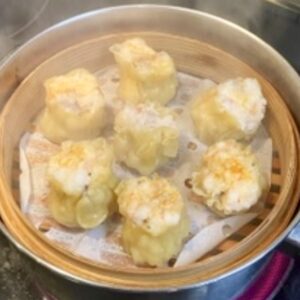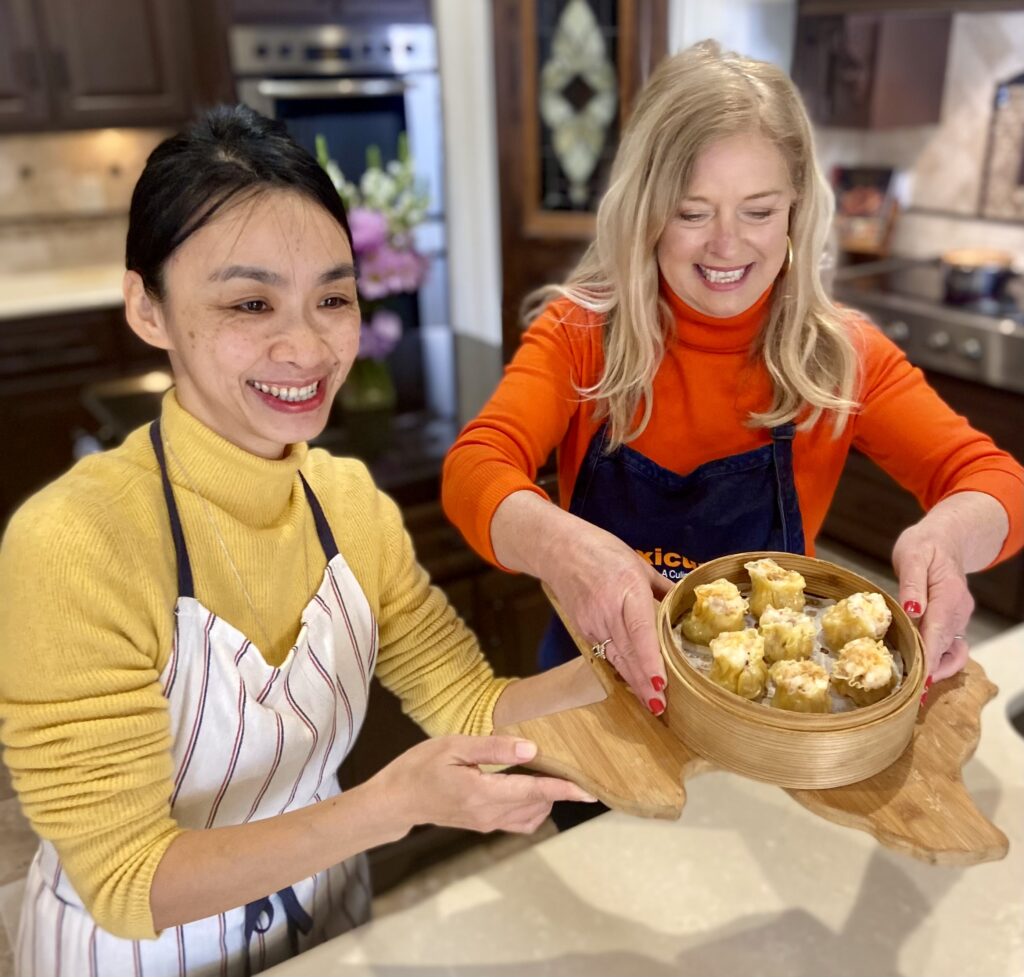Chinese New Year
Sui Mai Recipe
It’s January in Texas. By now, you’ve probably stored away your twinkle lights and New Years hats. Not so fast, a dragon is approaching February 10, 2024 to herald the Chinese New Year! Specifically, the first day of the Chinese lunisolar calendar is also known as Lunar New Year or the Spring Festival.
If learning something new is one of your resolutions, we’ve got you covered. Soon, Chinese Texans across the state will be welcoming the Year of the Dragon with fireworks, red paper lanterns with accents of gold. And of course, food and dancing. To join in on the food, Texicureans is sharing a Dim Sum recipe from Austinite, Queenar Zhang. Make this traditional Cantonese dish at home and then plan to experience the beauty of Shen Yun in San Antonio and Austin.
Chinese Texans keep their traditions alive in a big way during the 15 day celebration full of gatherings and endless favorite foods, many with meaning. Long noodles symbolize long life and dumplings shaped like the full moon represent family and perfection.
Mostly immigrating from western United States, Chinese Texans date back to the post-civil war era. A ready job market to rebuild infrastructure – particularly the building of railroads provided the main attraction.
More recently, our Universities have attracted highly talented Chinese citizens such as Simon Zhang. Continuing his studies at the University of Texas, he brought Queenar, his wife to join him in Austin.. I met Queenar at a Shen Yun production in Austin, and she graciously agreed to share her Cantonese customs and favorite dish – Dim Sum which is a mixture of shrimp served in beautifully crafted wrappers and steamed.
Queenar shares her typical Cantonese custom surrounding this historical dish: “On weekends and holidays Cantonese people would go to tea houses or traditional Cantonese restaurants that serve Dim Sum and tea. Tea houses are open everyday in the morning, in the afternoon and in the evening.
It is a good way for people to get together enjoying delicious food and quality time with family and friends. Unlike going to restaurants where people would usually have a big meal because food is served on regular dishes, tea houses are more casual and flexible, providing more diversity in food. Sui Mai is always served on smaller dishes so people can try a lot of different dishes in one meal without being too full. It is the most popular way of getting together and having some good food and good chat. Usually people would spend at least one hour in the tea house every time they go.
Tea is another highlight because in many tea houses Kungfu tea is served. Kungfu tea is tea freshly brewed on the table in delicate tea sets using premium tea leaves. People can choose their favorite tea leaves, brew and serve the tea by themselves with the Kungfu tea set and enjoy the best of the tea when it is hot and fresh. Tea helps to reduce greasiness of the food and plays an important role in keeping the meal balanced and healthy. Personally I prefer having tea before and at least 15 minutes after the meal when I am having green tea or black tea. For flower tea anytime is good.”

Siu Mai
Equipment
- 1 Steamer
Ingredients
- 1.5 lb Whole head-on Shrimp, meat removed, chopped
- 1/2 lb ground pork
- black pepper to taste
Sui Mai Wrappers
- 1/3 lb flour
- 1 egg
Instructions
- Mix chopped shrimp and ground pork together
- Literally "throw" the mixture onto a hard surface until appears like jelly
Sui Mai Wrapper
- Mix flour and an egg into a smooth dough.
- Press the dough to a very thin sheet (as thin as possible)
- Spread flour on both sides, then cut it into small round pieces (about 4-5")
Create Sui Mai
- Place about a tablespoon of shrimp mixture in middle of wrapper
- Press together in the middle to give hour glass appearance
- Steam in a steamer until done - about 7 - 8 minutes

